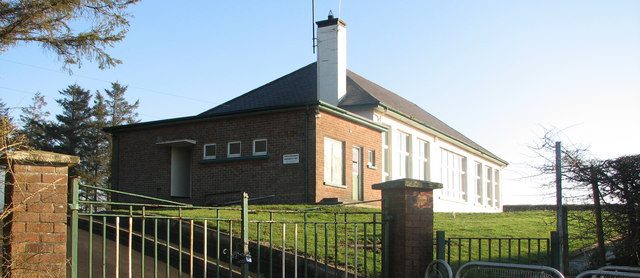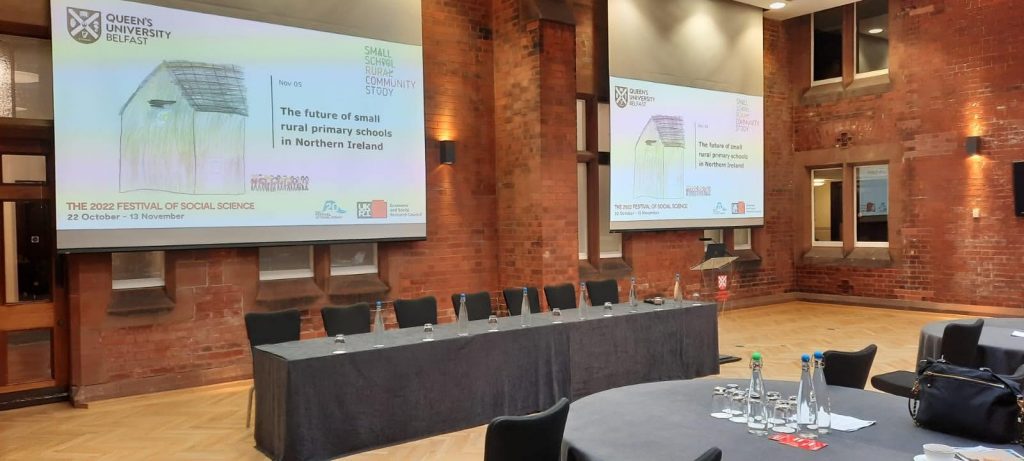In our first blog post, we are going to state the main reasons why we think we need a study of small rural schools in Northern Ireland (NI), particularly focusing on their relationship with their communities.
-
A GAP IN THE LITERATURE

There is literature on small rural schools in different European countries and further afield. However, despite some work in this area (i.e. a policy document paper for the Rural Community Network in 2002; a research paper for the NI Assembly in 2013; a paper on duplication of primary school provision in 2019; and a PhD on social deprivation in rural schools in 2011), there has been no empirical study exclusively focused on small rural schools in NI. NI small rural schools are facing similar challenges to those faced by small rural schools elsewhere, but the NI context is remarkably unique, especially when considering the legacy of the conflict. Small rural schools here exist within a complex, segregated and divided education system.
Much of the research in Northern Ireland has focused on urban areas, largely ignoring rural communities. However, some children and parents living in rural areas are also suffering from the legacy of the conflict, often experiencing feelings of fear and/or mistrust of the ‘other community’. In rural areas, there is often less shared space available than in urban contexts, with a lack of shopping areas and parks. In rural areas, separated social networks are also more obvious with segregated economic, religious, social, political, and sporting structures side by side within a small area. Therefore, a study focusing on the links and relationship between small rural schools and their communities in Northern Ireland is long overdue.
-
LONG TRADITION BUT CURRENTLY UNDER THREAT

Small school in rural area, now closed because of lack of numbers and cuts in education budgets – © Willie Duffin
Northern Ireland has a long tradition of small schools partly because of the rural character of the region coupled with a segregated and selective school system. There has always been a significant number of small schools. In fact, in 1964, there were as much as over 450 schools with between 26 and 50 pupils. This number has declined rapidly, and already by the early 1990s, there were less than 150 schools with such number of pupils. Every year several small rural schools close or merge, and like others around Europe and worldwide, they continue to be under threat of closure and amalgamation.
Small rural schools in NI have been viewed as less desirable than larger urban schools, and they have also been treated less favourably. Data from the school viability audits has shown that rural schools are more likely to experience a series of enrolment, financial and educational challenges than urban schools do. These issues include provision of a broad curriculum at post-primary; staff opportunities for professional development; difficulties in recruiting teachers and principals; and the threat of closure on the grounds of financial sustainability.
Despite a lack of evidence in this regard, small rural schools are seen as being more expensive and they are thought to have worse academic outcomes than larger urban schools. Multi-grade teaching (or composite classes) is particularly viewed negatively, with many believing that it contributes to poorer standards and outcomes. For instance, in 2016, the Minister for Education stated that, by the end of the planning period, he expected actions to address ‘the issue of primary pupils being taught in a composite class of more than two year groups’. In addition, in order to save money and avoid duplication, there have been calls for small schools (which would be close to other schools) to merge and become integrated schools instead.
On the other hand, pupils in rural schools in NI appeared to perform significantly better in the Progress in International Reading Literacy Study (PIRLS) 2016 than pupils in urban schools, even when pupil characteristics (including eligibility for free school meals and social deprivation as measured in the Super Output Areas) were considered. In addition, Roulston and Cook (2019) identified a range of potential advantages of small rural schools, including improved pedagogical engagement due to smaller staff teams and better school-community relations. There are also implications of closing rural schools for finance, transportation and the community. Indeed, young people living in remote areas with no local school often miss out in education. For instance, they are unable to reach school when there is ice and snow in winter. They can also be more socially isolated. For example, they might not be able to access after-school activities, as there is no bus to leave them home after.
In conclusion, policy decisions are being made within the context of little knowledge on what is the value of these schools for pupils and families and their contribution to the local communities.
-
INTEREST FOR SUCH A STUDY WITHIN NORTHERN IRELAND (AS THE PANDEMIC BRINGS ABOUT NEW ISSUES)

We believe such a study would be of value to rural communities and educational professionals, as it would give rural school pupils, teachers, and communities a voice that has not been listened to.
The rural population in Northern Ireland was already growing faster than the urban population before the pandemic. In fact, between 2001 and 2018, while the population in urban areas increased by only 6%, the population in rural areas grew by 16%, meaning that the rural share of the whole NI population rose from 34 per cent to 36 per cent. The fastest growth was concentrated in areas close to urban areas, either mixed rural/urban areas (32%) or less than an hour’s drive from Belfast (21%). It looks like the pandemic might accelerate this growth, as people’s priorities in terms of where to live change, and more people have been forced/encouraged to work from home. This will eventually affect schools in these areas.
The pandemic has also brought other new complexities and has shone light to the difficulties rural communities face in relation to broadband coverage. It has also shown the benefit of having small classes of pupils. Such a timely study will be able to tap into many of these issues.
————————————————————————————————————-
We are about to start a survey of principals as a first stage of the study, which will be followed with more in-depth case studies of four schools. We would welcome any feedback from our blog readers, so please don’t hesitate to leave us comments below.






